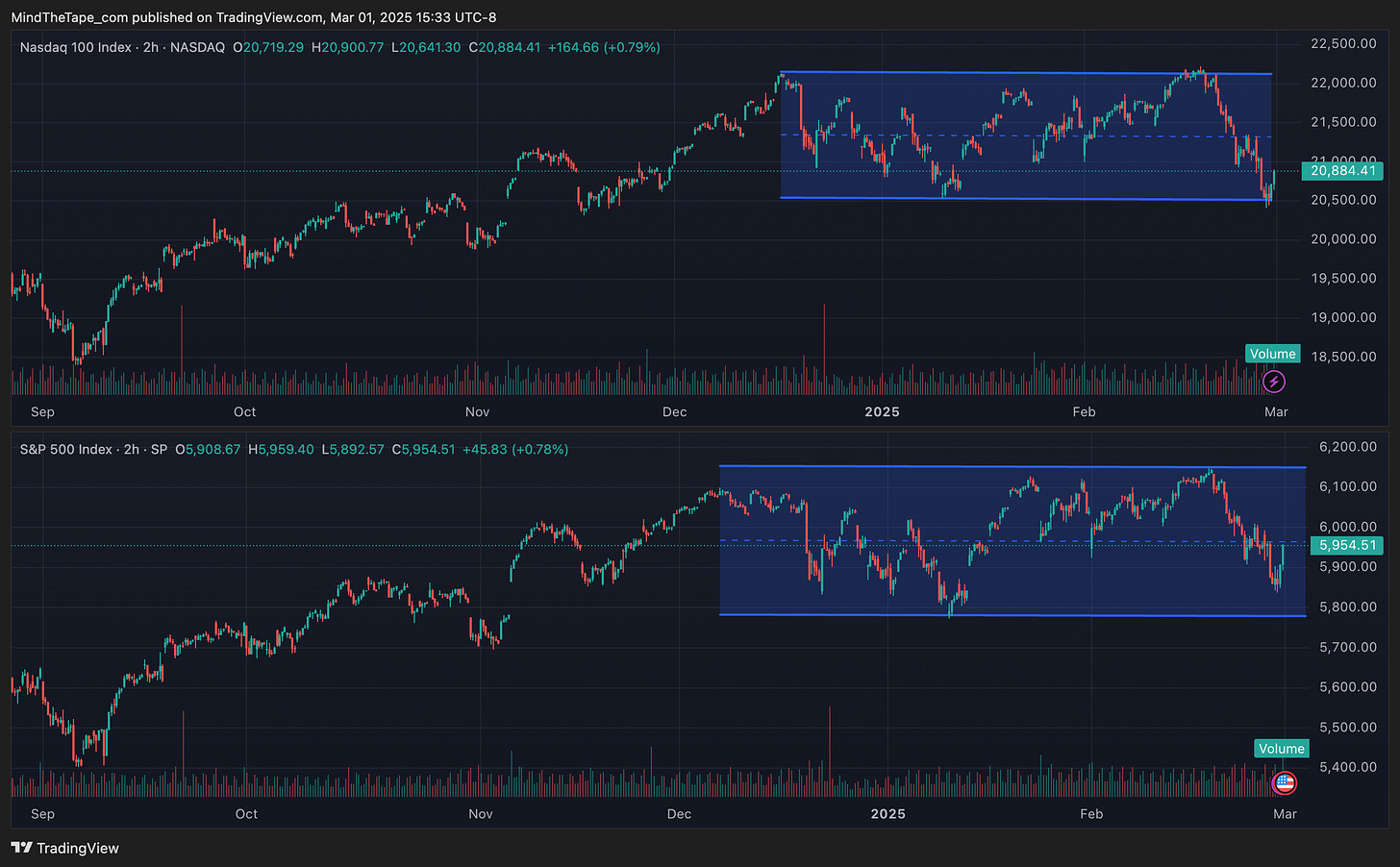Charts and the Week Ahead
Making sense of the week behind and the week ahead
Author’s Note: I will continue releasing free content where I can provide value to everyone. Posts will include premium content for paid subscribers at the end of emails or as separate write-ups. Free content will focus on macro views, whereas the paid content will focus more on the tactical trades I’m making.
Serious traders or investors should join Premium to get the best, most timely information.
Sometimes, when I write for you, I have an idea for a thematic piece in which I explain a market concept that is particularly relevant to the current market environment. My last piece on the momentum unwind was one of those. Other times, I just have a loose collection of thoughts and ideas.
My favorite pieces to write are always the first (and your favorite pieces, judging by the response they get) , but this week’s piece is decidedly the second.
Let’s start by taking a look at the technicals in a couple of the major indices.
S&P500
Forgive the business in this chart, it’s not actually as bad as it looks.
On February 20th we started a very consistent and sustained sell-off that culminated in the most violent day of selling on Thursday the 27th. A peak-trough sell-off of just over 5% in SPX.
Interestingly, on Friday, we jumped up to reclaim the 100D SMA by just a few points. It’s a tenuous reclaim but a bullish signal.
Back to the first chart. Looking at the second pane, you can see that breadth (the percentage of stocks about the 50d SMA) showed only a small sell-off. This tells us that while the index was experiencing some pain, it wasn’t broad-based. It likely was the continued unwinding of the momentum trade that I spoke about last week.
Contrast this to December’s 5% sell-off where we saw rampant selling across all names.
If this were truly a growth scare and not an idiosyncratic degrossing, I would expect to see price action resembling the December sell-off.
NDX
The selling was much more aggressive in the Nasdaq 100 index with a peak-to-trough sell-off of over 8%.
Interestingly, even in the tech-heavy index, we didn’t see an extreme breadth reversal.
Contrast this to December’s 7%+ sell-off, which saw a much worse deterioration of breadth. Granted, that sell-off was also much more prolonged.
This is consistent with my view that we are currently seeing a localized momentum unwind driven primarily by overextended positioning in meme names and the AI trade.
Home on the Range
Zooming out a bit to look at the major indices, it’s clear that we have been trading in a range since December, when I first started expressing caution about equities. That’s turned out to be a good call as equities have not returned much since.
In my view, there are several macro catalysts that need to be resolved or worsen to send us definitively out of this range—primarily tariffs, followed by the emerging “growth scare” narrative.
It’s my view that tariffs and the growth scare narrative are interlinked. Most of the recent growth data deterioration directly results from tariff fears rocking the economy. If we can get on the other side of these tariff fears then we shouldn’t have to worry too much about the economy which remains strong.
The one wrinkle in that is…
DOGE and the deficit
There’s some concern among markets that Trump, Elon, and Bessent’s commitment to bringing down the deficit will really affect the economy. Take a look at the 10Y yield to get a feel for just how much markets have changed their mind on Trump’s impact in the last few months.
I tend to think this concern is overblown, but other smart people have said it has already had an affect. Ana Wong, chief economist for Bloomber who has been quite good on employment data, writes:
A February print of 65k new jobs would be quite a shock to already pessimistic markets. I think we are likely able to “look-through” any potential weak ISM prints this week, but a number that low would be a shock to the system.
We’ll watch how the whisper number evolved on NFP throughout the week.
Seasonality
This chart is self-explanatory, but to summarize, the second half of February, centered around February OpEx, is historically weak.
I’ve previously been skeptical of seasonality but after seeing it play out over and over I’m starting to give it more credence.
My Positioning
Keep reading with a 7-day free trial
Subscribe to Mind The Tape to keep reading this post and get 7 days of free access to the full post archives.










